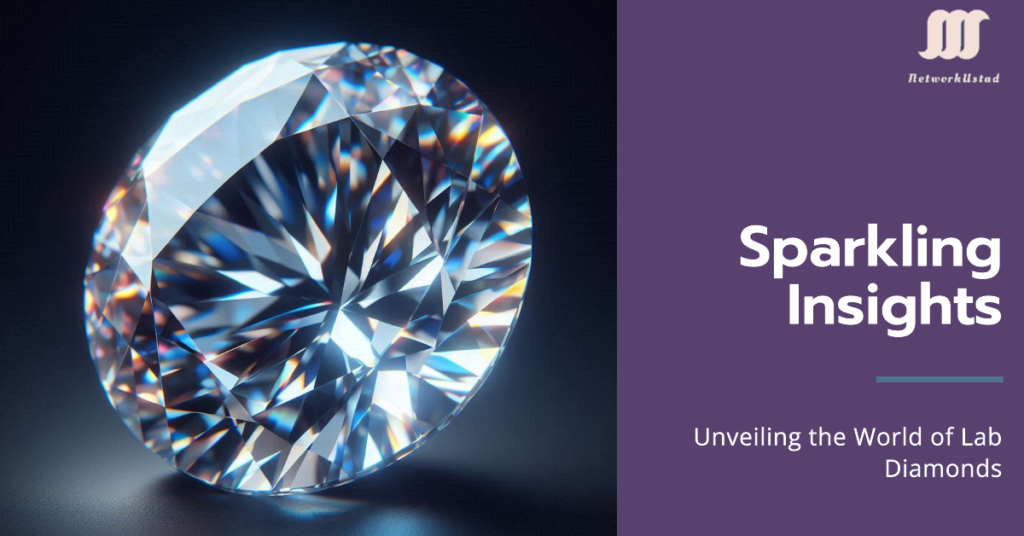The jewelry market has undergone significant changes in recent years. Lab-grown diamonds are now a popular choice for consumers. They seek ethical, eco-friendly alternatives to mined diamonds that are also affordable. As the demand for lab diamonds grows, so does the wholesale market for these stones. This article explores lab diamond wholesale. It covers its benefits, trends, and how to navigate this growing industry.
What Are Lab-Grown Diamonds?
Before diving into wholesale, one must understand what lab-grown diamonds are. Advanced technology produces lab diamonds or synthetic diamonds. It replicates the natural process that forms diamonds. There are two primary methods for producing lab diamonds:
- High-Pressure High Temperature (HPHT): This method mimics the conditions that form diamonds in the Earth’s mantle. It applies extreme pressure and temperature to carbon.
- Chemical Vapor Deposition (CVD): This technique breaks carbon-containing gases into carbon atoms. The atoms then crystallize into diamonds on a substrate.
Both methods create diamonds identical to natural ones in every way. They share similar chemical, physical, and optical properties. The key difference is their origin. It appeals to consumers who care about ethics.
The Rise of Lab Diamonds in the Wholesale Market
The wholesale market for lab diamonds has experienced significant growth. This is due to shifting consumer preferences. There is also a growing acceptance of these diamonds as a valid alternative to mined stones. A few key factors contributing to this rise include:
1. Ethical Considerations
Many see lab-grown diamonds as more ethical than mined ones. Mined diamonds can be linked to human rights abuses, environmental harm, and conflict financing. Consumers are more concerned about the ethics of their purchases, leading to a surge in demand for lab diamonds.
2. Environmental Impact
Mining for natural diamonds can harm the environment, destroying habitats and causing pollution. Lab diamonds need far less land and resources, so they are a more sustainable choice. As awareness of environmental issues grows, many consumers opt for lab-grown options.
3. Cost-Effectiveness
Lab diamonds cost 20-40% less than their mined counterparts. Many consumers find the price difference appealing. It’s especially true for those seeking more extensive, higher-quality stones within their budget. Wholesalers are using the price edge to sell lab diamonds cheaply.
Navigating the lab diamond wholesale market
Retailers and buyers sourcing lab diamonds wholesale must know the market. Here are some key considerations:
1. Choosing a reputable supplier.
The first step in entering the wholesale market is to find a reliable supplier. Find suppliers who meet industry standards and certify their diamonds. Reputable suppliers will offer stones graded by labs like the GIA or IGI. These certifications assure the diamonds’ quality and authenticity.
2. Understanding the 4 Cs
Like natural diamonds, experts grade lab diamonds using the 4Cs: Carat, Cut, Color, and Clarity. Familiarizing yourself with these criteria will help you make informed purchasing decisions.
- Carat: Refers to the weight of the diamond. Larger diamonds are generally more valuable.
- Cut describes how well the diamond cutters have shaped and faceted the diamond. It affects the diamond’s brilliance.
- Color: Lab diamonds can range from colorless to shades of yellow or brown. Colorless diamonds are in greater demand.
- Clarity: This measures the presence of internal or external flaws (inclusions and blemishes). Higher-clarity diamonds are more valuable.
Knowing these factors will help retailers show customers the value of lab diamonds.
3. Market Trends and Consumer Preferences
Staying informed about market trends is essential for anyone in the wholesale business. There is a growing interest in unique, custom designs. Many consumers want personalized jewelry. Also, the demand for lab diamonds in engagement rings and jewelry is rising. Monitoring these trends will help wholesalers meet consumer demands.
4. Marketing and Branding
Wholesalers must use effective marketing to stand out in a crowded market. Highlighting the ethical and environmental benefits of lab diamonds can resonate with consumers. Telling stories and showing the craft behind lab-grown diamonds can boost brand appeal. Social media, influencer partnerships, and online marketplaces can broaden visibility and reach potential customers.
Challenges in the lab diamond wholesale market.
The lab diamond wholesale market has many opportunities. But, it also has challenges that stakeholders must navigate.
1. Market Saturation
As the popularity of lab diamonds grows, more suppliers are entering the market. This increase in supply can lead to saturation. So, wholesalers must have a unique selling proposition to stand out.
2. Consumer Education
Despite their advantages, some consumers still harbor misconceptions about lab diamonds. Wholesalers must educate consumers about lab diamonds. This will dispel myths and boost sales.
3. Quality Control
Maintaining high standards of quality is vital in the wholesale market. Wholesalers must use strict quality controls. This ensures that their diamonds meet retailers’ and consumers’ expectations.
Conclusion
The lab diamond wholesale market is a fast-evolving sector. It offers unique opportunities for retailers and buyers. Lab diamonds are changing jewelry consumers’ choices. They are ethical, sustainable, and cost-effective. Wholesalers can thrive in this changing market by understanding it. They must stay updated on trends and focus on quality. Their success will help grow acceptance of lab-grown diamonds. As consumer awareness grows, the lab diamond wholesale market will thrive. This will spark a new era in the jewelry industry.




